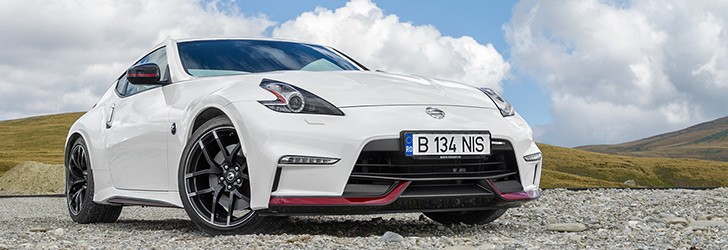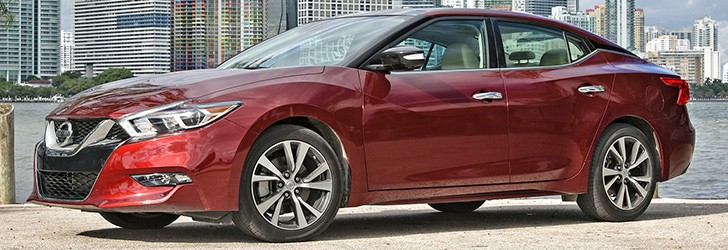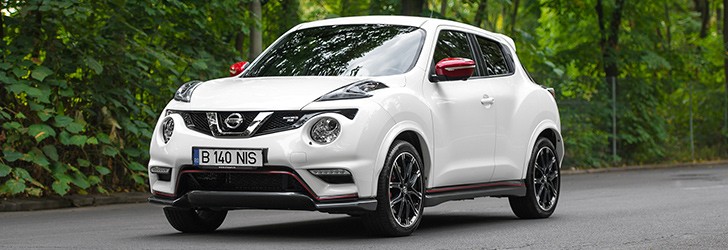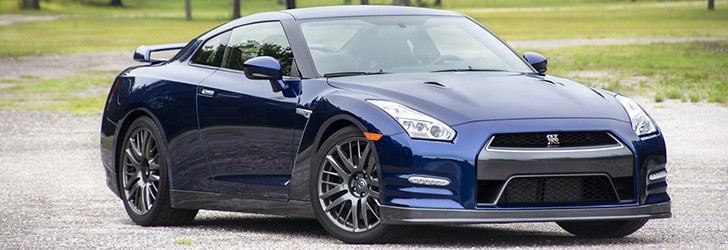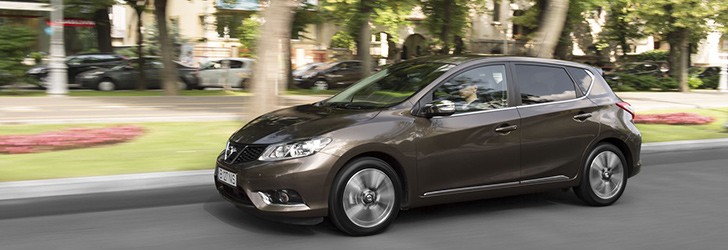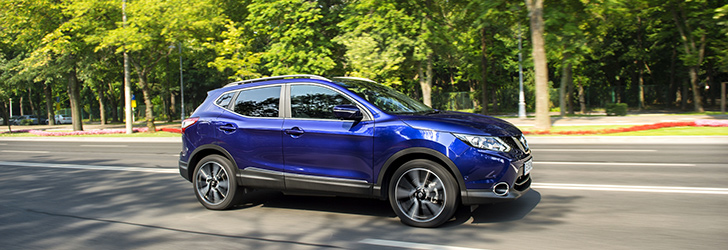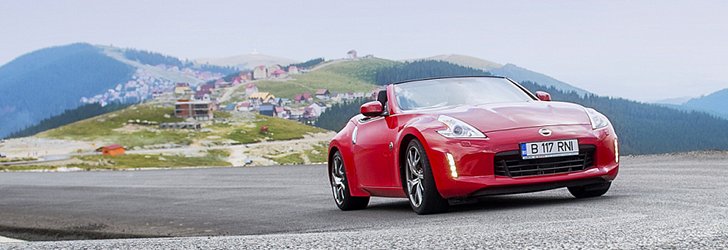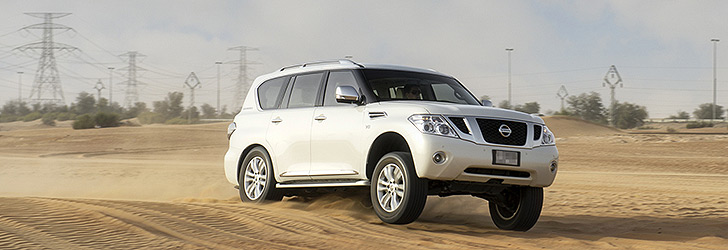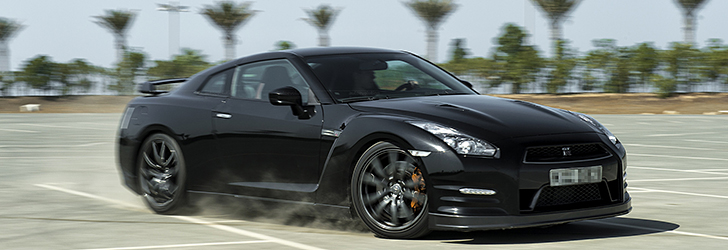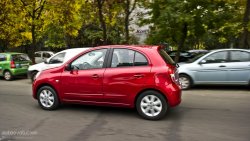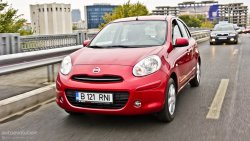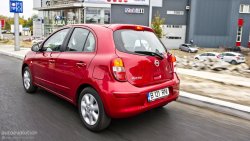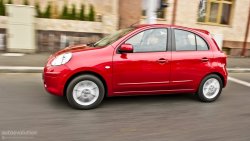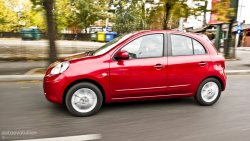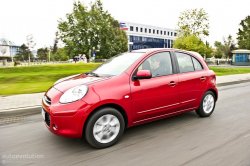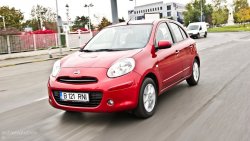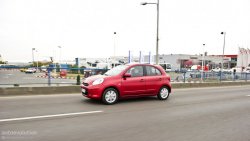NISSAN Micra Review
OUR TEST CAR: 2011 NISSAN Micra 1.2i CVT
Urban traffic is getting more and more crowded everyday and this city cars have to adapt and turn into creations that can keep you in a good mood during the infernal traffic. This story has two sides: the practical one and the entertaining one and the Micra passes the first test with flying colors, while brilliantly failing the second.
The vehicle is spacious enough and has reasonably-sized seats that allow passengers to relax. The continuously variable transmission on our test car allowed the driver to concentrate on more important things than the clutch dance, so we would recommend this one, in spite of its drawbacks, which we'll talk more about in the "tech facts"chapter.
However, the suspension is too firm for an urban vehicle and while this allows you to change direction swiftly, it will bother you everytime you meet a road imperfection, with things becoming worse during speed bumps encounters. A softer setup would've really been better.
The soundproofing leaves enough thins to be desired, but you won't be to bothered by this at city speeds.
The Micra gives an overall feeling of stiffness, a feature that takes away some of the comfort and doesn't seem to bring major benefits.
With the Micra, Nissan joins Lexus in claiming that the world doesn't need a diesel to be clean. You can choose between two direct-injected thee-cylinder engines, an 80 hp naturally-aspirated one, and its supercharged version, marketed as the DIG-S, which delivers 98 hp.
We drove the entry-level one, with the three-pot being matted to a continuously variable transmission.
Showing the displacement of a four-cylinder unit, the mill delivers on Nissan's promise of offering a refined experience... for a three-pot. Neither at idle, nor throughout the rev range, do you feel excessive vibrations.
The unit pulls decent throughout the rev range, but the CVT limits all hope of swift longitudinal moves. However, once the car gets going, you don't feel underpowered. In other words, you'll be able to cruise at any speed you line, but you'll have to forget about exploiting gaps in the traffic.
The Micra also keeps the promise of being an efficient means of transportation, returning an urban cycle efficiency of 8 something liters per 100 km (28 US mpg).
However, if you don't play this instrument as it was meant to be played and you're really in a rush, you'll climb up to 12 lites per 100 km (19.6 US mpg).
The rest of the car falls withing the segment average, using an electrically (a bit over-)assisted power steering and a suspension setup that includes a front McPherson assembly and a rear torsion beam, albeit tweaked to be a tad to firm for what a city car should offer.
The segment that the Micra belongs to is a rather toxic environment for gadgets, but the the medium-positioned Acenta trim level brought the minimum level of necessary goodies on board.
The driver received the most attention getting a chair with height adjustment and an armrest, as well as a leather-finished steering wheels (clearly the top element of the cabin). We'll also mention the CVT here, since it's a pretty nice toy to have around town.
We had to make due with the standard manual air-conditioning system, but we did enjoy the also standard Bluetooth and Auxiliary in for the audio system, as well as the trip computer and the electric front windows.
Frankly, there's nothing really interesting to talk about here. Maybe just the design of the center console, which gives the impression that the buttons are concentrated on a huge central knob.
In fact, the Micra makes things clear from the start: it wants to transport you and nothing more, and this is exactly what it offers, so ,for this chapter, a rather poor rating is inevitable.
It was one cool morning, when the Micra went to sustain its Euro NCAP exams. The little car was shaking a bit when it saw what it was going to meet by accident, but it decided that, since things had gotten to that point, it can't turn back
You can foresee what happened, but let's see the aftermath of all those official impacts.
The Micra received an overall rating of four stars, with scores of 84 percent for adult occupant protection, 79 percent for child occupant protection and 57 percent for safety assist.
The safety cell held its shape well during the frontal impact, with dummy readings showing good protection for the knees and femurs of the driver and front passenger. However dashboard structures posed a risk of injury for the the knee/femur/pelvis body region, with the protection for this area being rated as marginal.
In the side impact test, protection for most body regions was rated as good. However, the chest protection was marginal and the same rating was offered for the rear-end impact whiplash protection.
on the tarmac, the Micra feels rigid and while this might affect comfort, it enables the car to listen to the driver. Jokes aside, the car doesn't allow you to gain too much speed, so, if we combine the two, we can tell you that you should be safe.
Nissan always tried to experiment with the Micra: the first generation received a turbo-supercharged engine that offered it a 7.7 seconds 0 to 62 mph sprint, the second one came with a cabrio version and the third one had a design that turned heads and a Coupe-cabrio version. Well, this is not the case with the latest incarnation of the Micra.
Nissan is now using an all-mature approach and starts any Micra-related conversation by telling us that the vehicle now appeals to both sexes and all its want to do is be the most efficient car in its class. The Micra has always seeked efficiency, but now this is its only way.
And the Micra does indeed show this asset. It doesn't like to burn to much fuel, not even in the CVT version we tested, and its class-leading turning radius can really be helpful.
However, in this transformation process, the vehicle has lost every part that was there to trigger an emotion. The Micra is now just about transportation.
Neither the exterior, nor the interior, make any effort to make you want to come back. It's hard to see why you'd choose it over its competition, when it's good but doesn't impress in any way.
And the pricing doesn't help either. If you chose the entry-level Visia trim level with a manual, which means that you'll still get many of the features we had on our test car, things sit at EUR11,500 ($15, 860 at the current exchange rates), which is OK. But if you want the CVT, which really proves useful inside the city, or more goodies, things can climb up to EUR14,000 ($19,380), which really tears the Micra's business case apart. Nissan is aware of this and has come up with certain discounts, but these are only available on some markets.
The Micra is a fair car that doesn't try to be anything else than an efficient and reliable way of getting from A to B, inside the city. If this fits your car-buying profile,you can consider it, but you'll have to stick to the entry-level versions, in order to get a decent price.
The vehicle is spacious enough and has reasonably-sized seats that allow passengers to relax. The continuously variable transmission on our test car allowed the driver to concentrate on more important things than the clutch dance, so we would recommend this one, in spite of its drawbacks, which we'll talk more about in the "tech facts"chapter.
However, the suspension is too firm for an urban vehicle and while this allows you to change direction swiftly, it will bother you everytime you meet a road imperfection, with things becoming worse during speed bumps encounters. A softer setup would've really been better.
The soundproofing leaves enough thins to be desired, but you won't be to bothered by this at city speeds.
The Micra gives an overall feeling of stiffness, a feature that takes away some of the comfort and doesn't seem to bring major benefits.
With the Micra, Nissan joins Lexus in claiming that the world doesn't need a diesel to be clean. You can choose between two direct-injected thee-cylinder engines, an 80 hp naturally-aspirated one, and its supercharged version, marketed as the DIG-S, which delivers 98 hp.
We drove the entry-level one, with the three-pot being matted to a continuously variable transmission.
Showing the displacement of a four-cylinder unit, the mill delivers on Nissan's promise of offering a refined experience... for a three-pot. Neither at idle, nor throughout the rev range, do you feel excessive vibrations.
The unit pulls decent throughout the rev range, but the CVT limits all hope of swift longitudinal moves. However, once the car gets going, you don't feel underpowered. In other words, you'll be able to cruise at any speed you line, but you'll have to forget about exploiting gaps in the traffic.
The Micra also keeps the promise of being an efficient means of transportation, returning an urban cycle efficiency of 8 something liters per 100 km (28 US mpg).
However, if you don't play this instrument as it was meant to be played and you're really in a rush, you'll climb up to 12 lites per 100 km (19.6 US mpg).
The rest of the car falls withing the segment average, using an electrically (a bit over-)assisted power steering and a suspension setup that includes a front McPherson assembly and a rear torsion beam, albeit tweaked to be a tad to firm for what a city car should offer.
The segment that the Micra belongs to is a rather toxic environment for gadgets, but the the medium-positioned Acenta trim level brought the minimum level of necessary goodies on board.
The driver received the most attention getting a chair with height adjustment and an armrest, as well as a leather-finished steering wheels (clearly the top element of the cabin). We'll also mention the CVT here, since it's a pretty nice toy to have around town.
We had to make due with the standard manual air-conditioning system, but we did enjoy the also standard Bluetooth and Auxiliary in for the audio system, as well as the trip computer and the electric front windows.
Frankly, there's nothing really interesting to talk about here. Maybe just the design of the center console, which gives the impression that the buttons are concentrated on a huge central knob.
In fact, the Micra makes things clear from the start: it wants to transport you and nothing more, and this is exactly what it offers, so ,for this chapter, a rather poor rating is inevitable.
It was one cool morning, when the Micra went to sustain its Euro NCAP exams. The little car was shaking a bit when it saw what it was going to meet by accident, but it decided that, since things had gotten to that point, it can't turn back
You can foresee what happened, but let's see the aftermath of all those official impacts.
The Micra received an overall rating of four stars, with scores of 84 percent for adult occupant protection, 79 percent for child occupant protection and 57 percent for safety assist.
The safety cell held its shape well during the frontal impact, with dummy readings showing good protection for the knees and femurs of the driver and front passenger. However dashboard structures posed a risk of injury for the the knee/femur/pelvis body region, with the protection for this area being rated as marginal.
In the side impact test, protection for most body regions was rated as good. However, the chest protection was marginal and the same rating was offered for the rear-end impact whiplash protection.
on the tarmac, the Micra feels rigid and while this might affect comfort, it enables the car to listen to the driver. Jokes aside, the car doesn't allow you to gain too much speed, so, if we combine the two, we can tell you that you should be safe.
Nissan always tried to experiment with the Micra: the first generation received a turbo-supercharged engine that offered it a 7.7 seconds 0 to 62 mph sprint, the second one came with a cabrio version and the third one had a design that turned heads and a Coupe-cabrio version. Well, this is not the case with the latest incarnation of the Micra.
Nissan is now using an all-mature approach and starts any Micra-related conversation by telling us that the vehicle now appeals to both sexes and all its want to do is be the most efficient car in its class. The Micra has always seeked efficiency, but now this is its only way.
And the Micra does indeed show this asset. It doesn't like to burn to much fuel, not even in the CVT version we tested, and its class-leading turning radius can really be helpful.
However, in this transformation process, the vehicle has lost every part that was there to trigger an emotion. The Micra is now just about transportation.
Neither the exterior, nor the interior, make any effort to make you want to come back. It's hard to see why you'd choose it over its competition, when it's good but doesn't impress in any way.
And the pricing doesn't help either. If you chose the entry-level Visia trim level with a manual, which means that you'll still get many of the features we had on our test car, things sit at EUR11,500 ($15, 860 at the current exchange rates), which is OK. But if you want the CVT, which really proves useful inside the city, or more goodies, things can climb up to EUR14,000 ($19,380), which really tears the Micra's business case apart. Nissan is aware of this and has come up with certain discounts, but these are only available on some markets.
The Micra is a fair car that doesn't try to be anything else than an efficient and reliable way of getting from A to B, inside the city. If this fits your car-buying profile,you can consider it, but you'll have to stick to the entry-level versions, in order to get a decent price.
THE END
12
Our NISSAN Testdrives:
Photo gallery (60)

